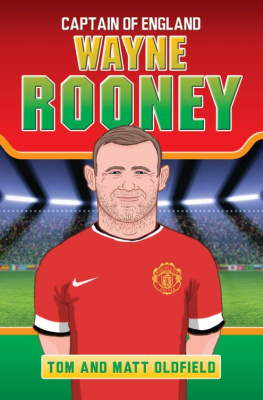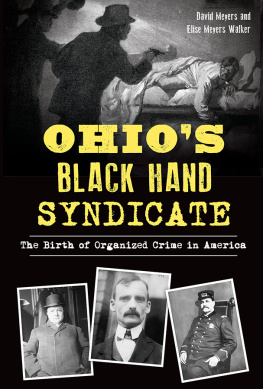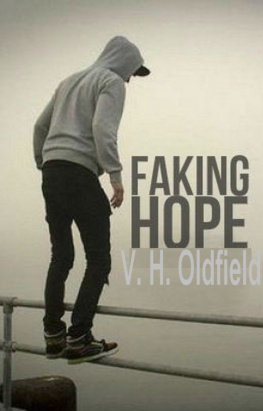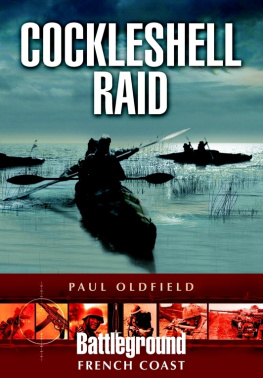Thank you for downloading this Simon & Schuster ebook.
Get a FREE ebook when you join our mailing list. Plus, get updates on new releases, deals, recommended reads, and more from Simon & Schuster. Click below to sign up and see terms and conditions.
CLICK HERE TO SIGN UP
Already a subscriber? Provide your email again so we can register this ebook and send you more of what you like to read. You will continue to receive exclusive offers in your inbox.
We hope you enjoyed reading this Simon & Schuster ebook.
Get a FREE ebook when you join our mailing list. Plus, get updates on new releases, deals, recommended reads, and more from Simon & Schuster. Click below to sign up and see terms and conditions.
CLICK HERE TO SIGN UP
Already a subscriber? Provide your email again so we can register this ebook and send you more of what you like to read. You will continue to receive exclusive offers in your inbox.

Touchstone
An Imprint of Simon & Schuster, Inc.
1230 Avenue of the Americas
www.SimonandSchuster.com
New York, NY 10020
Copyright 2018 by Victoria Bruce and William Oldfield
All insert photos are courtesy of the Oldfield Collection unless otherwise indicated.
All rights reserved, including the right to reproduce this book or portions thereof in any form whatsoever. For information, address Touchstone Subsidiary Rights Department, 1230 Avenue of the Americas, New York, NY 10020.
First Touchstone hardcover edition August 2018
TOUCHSTONE and colophon are registered trademarks of Simon & Schuster, Inc.
For information about special discounts for bulk purchases, please contact Simon & Schuster Special Sales at 1-866-506-1949 or .
The Simon & Schuster Speakers Bureau can bring authors to your live event. For more information, or to book an event, contact the Simon & Schuster Speakers Bureau at 866-248-3049 or visit our website at www.simonspeakers.com.
Interior design by Kyle Kabel
Jacket design by Pete Garceau
Jacket photograph: Bridges of Pittsburgh: 1905 / Shorpy Historic Photo Archive
Library of Congress Cataloging-in-Publication Data is available.
ISBN 978-1-5011-7120-8
ISBN 978-1-5011-7122-2 (ebook)
To my sister, Allison; my father, Edward Fulton; and mother, Terry; great-grandfather John Frank and great-grandmother Margaret Galena Oldfield; everyone within the Oldfield and Iacone families who never gave up on our family secret, and especially to those within the United States Postal Inspection Service who risk their lives every day for all of us.
William H. Oldfield
PROLOGUE
O n the night of April 18, 1908, in the railroad town of Bellefontaine, Ohio, eighteen-year-old Charles Demar walked into the fruit shop he owned with his uncle, Salvatore Cira, and put a bullet into his uncles head. Salvatores body was discovered later that night by his wife among crates of bananas and apples spattered with his blood. When the police arrived, Mrs. Cira appeared not to understand them, or at least she pretended she didnt speak English. This wasnt surprising, as the police commonly ran into this problem with Italian immigrants who wanted nothing to do with law enforcement on any level. The most preyed-upon victims were completely unwilling to give police any leads, even if theyd personally seen a suspect commit a crime against a loved one.
Its not that the Bellefontaine police lacked investigative skills. No law enforcement institution in the nation had been able to penetrate the crime-ridden neighborhoods across America that absorbed six million Italian immigrants in the last two decades of the 1800s. Increasingly in the papers, the gruesome crimes were credited to Black Hand criminals because of several recovered threat letters eerily penned by La Mano Nera. Only after massive criminal activity in New York Citys Lower East Side began to bleed into surrounding neighborhoods did the NYPD form a group of five Italian-American police detectives. The Italian Squad, under renowned detective Joe Petrosino, was having some luck by 1908 and making arrests for individual crimes, especially bombing incidents.
The Bellefontaine cops searched the premises of Demars Fruit Importers and collected as much evidence as they could. There was no sign of forced entry, and they found cash in a drawer untouched. What they did find on Ciras body tipped them off to the idea that the murder was more sinister than a random killing. In the dead mans pants pocket, there were two letters written in Italian. Knowing they had no chance of getting anywhere by interviewing friends or relatives of Cira, the cops were hopeful that the letters would lead to a break in the case. They also knew that their work was done, because the letters put the murder squarely under the jurisdiction of the United States Post Office Department and its prominent inspectors.
The Bellefontaine Police brought the letters in a secure pouch to the U.S. Post Office in Columbus. The enormous four-story federal building on Third and State Streets was the closest post office to Bellefontaine where a Post Office inspector was domiciled. There they found Inspector no. 156, Frank Oldfield, a diminutive man in a well-fitting suit, chomping away on a cigar. Oldfield pushed some papers and files aside and opened the letters. He made a quick visual scan of the documents with his magnifying glass. A satisfied smile appeared on his face.
Since arriving in Columbus in 1901, the forty-one-year-old Oldfield had become one of the most aggressive and successful Post Office inspectors in the service. Hed run down safecrackers, exposed a corruption ring between a U.S. congressman and the New York City assistant district attorney, and busted crooks on the railroads for robbing the mail. But there was nothing Oldfield wanted more than to run to earth what he believed was an international organized crime ring spanning America all the way to Palermo, Sicily: truly bad guys whose members called themselves The Black Hand Society.
Few people knew that U.S. Post Office inspectors were the countrys most powerful federal law enforcers at the time. Long before the FBI came into being, U.S. Post Office inspectors had jurisdiction all over the world. The presidentially appointed position gave a Post Office inspector authority to take over an investigation from any law enforcement agency in the country if the United States mails were used in any fashion. He could bust a crime ring anywhere on earth if one of the suspects so much as licked a U.S. postage stamp and sent a letter or package through the mail. Inspectors moved about on the railways where every train had a postal car, hopping on anywhere at a moments notice and flashing a silver badge in lieu of fare. They went with a vengeance after train robbers who grabbed pouches of cash and valuables in transit across the country, even on ships across the ocean. Inspectors had the legal authority to commandeer any vehicle they needed: a horse and buggy, a traineven a steamer shipif it meant catching a crook. They dressed in plain clothes, carried concealed weapons, and worked mostly under the radar, using secret coded telegrams to update headquarters along the way. But with all their incredible crime busts, not one Post Office inspector had yet had a single break into the crimes of the Black Hand Society.
CHAPTER 1
Next page











